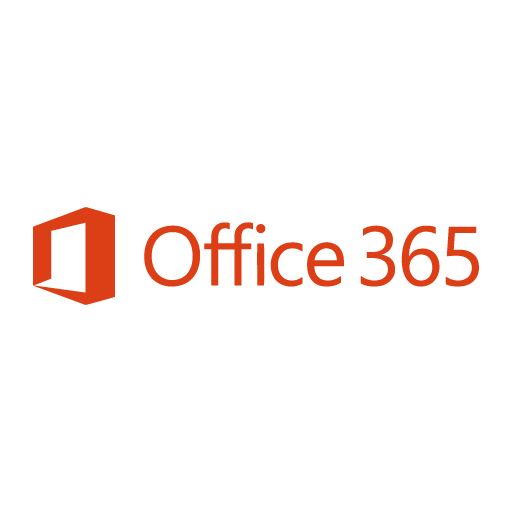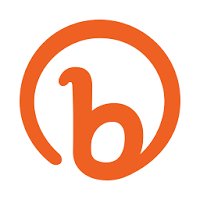Swagger: Starting A Digital Men's Magazine
Hello! Who are you and what are you working on?
My name is Drew Williams and I run and operate a digital lifestyle magazine for men called SWAGGER Magazine. SWAGGER Magazine is one of the first products created under our parent company, Swagger Publications Inc.
Our product is simple. It is targeted to the affluent males that aspire to have great things in life, and are on the path to building themselves to be powerful and successful people in all aspects of life - no matter what their interests are. We focus on Lifestyle, Fashion, Gear, Food, Dating, and Business and Careers.
The mission statement for Swagger is to take the average man from nothing to something, by featuring successful individuals in every domain and outlining what steps they took to get there and how anyone else can follow in their footsteps.
SWAGGER Magazine currently pulls in about 1-2k per month and is growing rapidly. Our primary source of revenue is sponsored posts, and celebrity features which we call "Kings of Swag". We currently own the trademark for “Swagger” in Canada and share that mark with Proctor & Gamble after a $100,000 trademark war.

What's your backstory and how did you come up with the idea?
Honestly, the idea started as a hobby.
When I started the blog in 2007, it was meant to be an alternative to the major men’s magazines on shelves because the magazine industry still hadn’t fully accepted the fact that everything was going digital and that print would be dying a slow and painful death. I wanted men to have access to cool guy things online, as well as dating advice, with a focus on realistic male acquisitions instead of focusing on things your average guy could not afford. Promoting the "fake it till you make it mentality".
I had worked for a magazine called Performance Auto and Sound Magazine pasmag.com, so I had in-depth knowledge about the business from a print perspective.
Make sure people WANT what you are producing and are willing to pay for your product - not only on the consumer side but on the business side.
To validate my idea and brand, I printed sample versions of my magazine using Magcloud.com. The issues cost about $20 each plus shipping to print, but they came in individual plastic bag copies and looked so authentic (this sample printing is how I was able to capture funding from an investor as well - more on that later). I went to my local Chapters, Indigo and corner stores, and placed copies of my magazine on shelves, and then sat and watched from a distance. People picked up my magazine to buy and that’s how I knew my brand could sell.
The samples magazines I printed had about 50% content pages and the rest were ‘dummy’ pages (pictures of gentlemen lifestyle, nice houses, beautiful women, nice cars, etc.) which was needed to fill out the magazine to make it look authentic on the shelves. I even printed fake barcodes and prices on the samples (if I recall correctly, I made it $6.99 CAN which is roughly one shiny penny USD lol). Finding out just how important my brand name and the visuals of the book were to the consumer was key for me and I did find out in high traffic places that men and women in my demographic (visually between the ages of 25 - 35) would pick up the book to see what was inside. Some read it, and on a few occasions went up to buy it and I had to intercept them before they got to the register.
I found the process both uplifting and tedious because it required a lot of patience. I wouldn’t recommend this to anyone now because I am sure there are better ways to validate your product, but I was learning as I went along.
At the time of inception I was working for a customer experience company called Vital Insights. I created customer satisfaction surveys and software for companies such as BMW, Audi, and Volkswagen. I was doing okay financially but I definitely wanted to build something of my own, something I could pass to my kids one day (maybe I watched Vanilla Sky one too many times. Lol).
Describe the process of designing the website.
The design of the website was simple for me because I have a background in graphic design and web development.
I designed the logo fairly quickly, using inspiration from all the luxury brands I could think of. I found a very bold font that felt masculine as well as clean and expensive at the same time.
I built the website using Wordpress and bought one of the most expensive magazine themes I could find on themeforest.net and customized it so that it could contend with the big boys already killing it online. Askmen.com and GQ.
Logo design and website production cost me a little over $200 but would have likely cost me upwards of 3k to get everything going and launch the magazine online.
Describe the process of launching the website.
I had very little funds to spend on this project in the early days.
I would use my bi-weekly paychecks to pay for writers to write for my magazine. I had no idea how to source great talent so I used Craigslist and Kijiji to find writers who were looking to make a name for themselves and had no platform to do so. A simple post saying, “Looking for writers for a Men’s Magazine" and posted my cover sample (seen above). I would hire a writer for each category, and have them write an article once a week, because that was all I could afford. I honestly wasn’t seeing any income but I was seeing the readership grow very slowly year to year. It wasn’t until 2016 when I got into SEO, hired an editor, and started producing far better content that was sticky, that I began to see real results.

I was getting frustrated so I printed a copy of my magazine and left it on my boss’s desk one day at work. He himself had swagger and definitely could see the potential, so I took a risk. He saw it and called me into his office, asked me what it was, and I told him it’s my after work project. He then offered to invest and suggested we become partners. This started us on the path of building a viable business with the magazine. He threw in 20k to get things going.
The biggest thing we learned was that Content is King. We initially spent on content that was weak and written overseas (cheaper labor). However, the quality wasn’t strong enough to capture our audience. Once we started writing longer and more valuable content we saw significant increase in traffic and readers
Since launch, what has worked to attract and retain customers?

Using systems like upwork.com for staffing the business at a rate that was lower than most was key. We hired executive assistants and writers and marketers to help build social media, content and sales.
We had used a newsletter but found it didn’t really help our numbers or business in a way we felt added any real value. A huge thing for us has been using Ahrefs.com to find content ideas and target keywords our competitors are using and help increase our organic traffic to acquire more readers. Check out Tim’s blog on Ahrefs.com - we live by his SEO tactics. They work.
I would recommend finding someone to take over the day to day for you, even if it means taking a piece of your revenue. Especially if you continue to have a day job.
One of the best tactics Ive used in SEO that has worked in spades for us is finding the low difficulty keywords and writing our articles around that topic.
Beautiful thing there is that low difficulty keywords only require 5-10 backlinks to be ranked on first page of Google search! Ahrefs.com makes finding this easy. Simply look at a competitors content that is doing well with traffic (for me, doing well is over 10,000 hits a month) and then look for keywords that are used in the article and find the keywords with low difficulty scores and write your new article on a similar topic with these keywords "baked in" and publish.
Your article won’t rank just from that alone, you’ll need to produce the backlinks from high Domain Authority sites. I have an excel sheet for every site I can create a backlink from for free. I use this list for EVERY article we write. So every post made we go and make our backlinks from these sites linking back to our original article. On this list are. Facebook, Twitter, Myspace, Medium, Instagram.
These sites alone get us enough to rank for a low priority keyword. If I want to make sure my competition can easily pass me on it then I add a few more backlinks from other bookmarking type sites. Like Stumbleupon (now mix.com), Digg, etc. This process is definitely not sexy at all but definitely works. Don’t believe me? Search “top 10 mens online clothing stores” on Google and see where we rank. It was posted May 11th 2018, and we now rank on first page.
We used Facebook groups to build our 60k following. Essentially contacting each group and bartering share for share and using similar content to the successful groups that were targeted to our demographic.
How are you doing today and what does the future look like?
We currently hover around 5K views a day. Low days are 1K - we fluctuate because we are always doing campaigns, etc. Our bounce rate isn’t great at 70%, but we are looking to revamp our site soon as I believe the experience is a bit dated and can be improved. This involves working with a few people now that we have the income to support growth.
We are currently not profitable (if you include our startup legal fees), but we are well on our way to making real revenue. Our goal is to establish a stronger sales team and really get onto the radar for some of the businesses that typically printed advertising in magazines and are now looking for an online substitute directed to the male market.

We schedule all our content the month before and release weekly. The app is updated less frequently as it has many more costs involved to complete and also requires much more custom photography, etc.
We have an expanding audience on Facebook and Instagram and we try to keep our content at a premium level to match our branding. Facebook numbers were brought up through post sharing with similar niche pages. It’s amazing how people with the same goals will help you out as long as there is mutual gain.
Through starting the business, have you learned anything particularly helpful or advantageous?
In the beginning I trusted no one. I was determined to do it all on my own. I learned the hard way that I couldn’t. The site sat making no money because I couldn’t stretch myself over my fulltime job and my dream to build Swagger into a large media company. Since then I’ve acquired partners and brought on a supreme editor, Stephen Branco, to help day-to-day with organizing content and building the business. His impact on the business is significant.
I would recommend finding someone to take over the day-to-day for you even if it means taking a piece of your revenue, especially if you continue to have a day job.
What platform/tools do you use for your business?
The entire site is built on WordPress but is customized to look and compete with our competitors. We use MailChimp for our email marketing and newsletter communications, and we use Ahrefs for SEO. Our hiring overseas was done using upwork.com
What have been the most influential books, podcasts, or other resources?
The Subtle Art of not giving a F&*^ was an inspirational read in deciding to drive harder at what I wanted out of all this extra work I was putting on my plate instead of spending time with my family. Gary Vaynerchuk’s media was also inspirational in deciphering what would work and what wouldn’t, and how to keep trying when things failed.
Another source of inspiration is smartpassiveincome.com. Their podcast is incredible and really eye opening.
I started my business before the owner of Foundr, and he was quickly able to get his magazine to where I had hoped to be. His advantage was that the startup industry didn’t have a strong media source for entrepreneurs on the App Store, so he blew up quickly.
We are looking for that moment to happen with us, and his success is proof we can do it.
Advice for other entrepreneurs who want to get started or are just starting out?
The best advice I can give is to really do some due diligence on your product and your service. Make sure people WANT what you are producing and are willing to pay for your product - not only on the consumer side but on the business side. Make sure businesses will want to spend money to speak to the audience you are capturing. Pennies add up to dollars. Reinvest that money back into the business, staffing, social media, SEO - build your business and audience so the money you are making multiplies until you can quit your day job.
Are you looking to hire for certain positions right now?
Sales People. I need them. Not just for cold calling and outreach, but sales people that live and breathe male products, and are connected with the companies that have traditionally advertised in print. Print has shifted and capturing those advertising dollars is our key to making SWAGGER a success.
Where can we go to learn more?


Download the report and join our email newsletter packed with business ideas and money-making opportunities, backed by real-life case studies.

Download the report and join our email newsletter packed with business ideas and money-making opportunities, backed by real-life case studies.

Download the report and join our email newsletter packed with business ideas and money-making opportunities, backed by real-life case studies.

Download the report and join our email newsletter packed with business ideas and money-making opportunities, backed by real-life case studies.

Download the report and join our email newsletter packed with business ideas and money-making opportunities, backed by real-life case studies.

Download the report and join our email newsletter packed with business ideas and money-making opportunities, backed by real-life case studies.

Download the report and join our email newsletter packed with business ideas and money-making opportunities, backed by real-life case studies.

Download the report and join our email newsletter packed with business ideas and money-making opportunities, backed by real-life case studies.



















